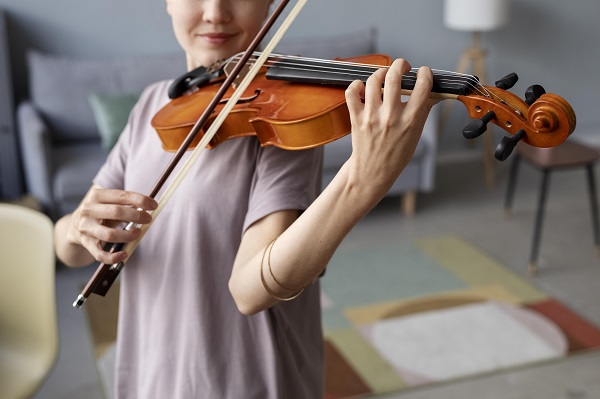Exploring the Different Styles and Techniques in Violin Lessons

Violin lessons offer a varied range of styles and techniques, each contributing uniquely to the player's skill set and musical expression. Whether you're a beginner or an advanced student, understanding the variety of approaches available can enhance your learning experience and help you choose the path that aligns best with your musical goals.
Classical Technique
Classical violin technique is foundational for any serious violinist. It focuses on precise finger placement, bow control, and posture. Students begin with simple scales and arpeggios, gradually advancing to complex pieces by composers like Bach, Beethoven, and Mozart. Mastery of classical technique provides a solid base, allowing for versatile adaptation to other styles.
Fiddle Style
Fiddle playing, often associated with folk music traditions, includes styles such as Irish, Scottish, and Appalachian. Unlike classical music, fiddle styles are characterized by a more relaxed approach to rhythm and intonation. Techniques such as double stops, slides, and ornaments like grace notes and rolls are common. Fiddle lessons often involve learning traditional tunes by ear, providing a different kind of engagement compared to classical training.
Jazz Violin
Jazz violin is a genre that blends improvisation with traditional violin techniques. Jazz violinists often use a variety of bowing styles and incorporate techniques such as vibrato, slides, and harmonics to create a distinctive sound. Violin lessons for adults focusing on jazz often emphasize improvisation skills, chord progressions, and understanding jazz theory. Students may explore famous jazz violinists' works and develop their own improvisational skills. These lessons can be tailored to adult learners, helping them integrate jazz techniques into their playing and enhance their musical versatility.
Contemporary and Pop Styles
Contemporary violin techniques are used in various genres, including pop, rock, and electronic music. In these lessons, students may learn to play with a more rhythmic approach and use modern effects like amplification and looping. Techniques such as pizzicato (plucking the strings) and extended techniques like harmonics and sul ponticello (playing near the bridge) are explored. This style encourages creativity and adaptation of traditional skills to modern musical contexts.
Baroque Technique
Baroque violin playing focuses on the music of the 17th and early 18th centuries. It emphasizes the use of historical performance practices, such as the use of a lighter bow and a different bowing technique. Students learn to interpret ornamentation and stylistic nuances characteristic of the Baroque era, including works by composers like Vivaldi and Handel. Mastery of Baroque technique provides insight into the historical development of violin music.
Electric Violin
The electric violin introduces a new dimension to playing with its ability to produce a wide range of sounds through electronic amplification. Lessons may cover various effects, such as distortion, delay, and reverb, to create unique sounds. Students learn to use equipment like pedals and amplifiers to modify their tone, offering a modern twist on traditional violin performance.
Integration and Application
As students progress, they often integrate techniques from different styles to develop their unique sound. For instance, a classical violinist might incorporate jazz improvisation techniques, or a fiddler might explore electric violin effects. Lessons that offer exposure to various styles can be beneficial in broadening a student's musical range and adaptability.
Exploring different violin styles and techniques is crucial for developing a well-rounded musical skill set. Each style offers unique challenges and rewards, contributing to a richer understanding of the violin and its capabilities. Understanding these various styles and techniques can help you make informed decisions about your violin education and shape your musical journey effectively. Whether you lean towards classical precision or contemporary innovation, embracing a range of techniques will enrich your practice and performance.